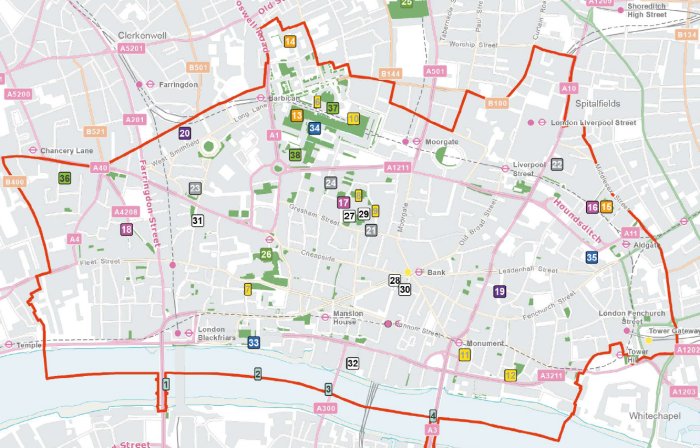The City of London Corporation has announced it will source all of its electricity from renewables from October this year – and solar power will play a role.
The City Corporation says it will have more solar panels put on its buildings and also invest in wind and solar farms outside its boundaries.
“Sourcing 100% renewable energy will make us cleaner and greener, reducing our grid reliance and running some of our buildings on zero carbon electricity,” said Catherine McGuinness, Chairman of the City of London Corporation’s Policy and Resources Committee. “This is a big step for the City Corporation and it demonstrates our commitment to making us a more socially and environmentally responsible business.”
The City of London Corporation is the governing body of the “Square Mile”, a term used for the city’s historic centre and primary central business district. Prior to boundary changes in 1994 that saw the area grow to 1.12 square miles, it was close to exactly one square mile.
The Square Mile’s residential population is only around 8,000, but more than 400,000 people commute into the City every day for work, plus millions of tourists visit each year. The City of London is home to 24,000 businesses.
The City Corporation is responsible for a wide portfolio of work and institutions both inside and outside the Square Mile, so it is a significant consumer of energy.
Greater London Solar Goals
In related news, last year we reported the Mayor of London, Sadiq Khan, set an ambition for the city to achieve 1 gigawatt of installed solar capacity by 2030 (ten times more than current levels) and 2 GW by 2050. This is a goal he acknowledges will be quite difficult to achieve. The Final Solar Action Plan (PDF) and Fuel Poverty Action Plan was published alongside the final London Environment Strategy early this month.
Australian Capital CBD Solar Power Potential
Many of the rooftops in the Central Business Districts of Australia’s capital cities could be turned into clean power stations.
Analysis released in April by the Australian PV Institute revealed the usable rooftop area in the CBDs of Brisbane, Melbourne, Sydney, Canberra and Adelaide combined could host 1,465MW of solar capacity, which would generate an estimated 1,838 gigawatt hours of electricity each year.
In the case of Adelaide’s CBD, its 43% of usable rooftop area could host 129MW of solar panels, producing 174MW hours of electricity a year and supplying equivalent to 26% of the city area’s electricity consumption.


 RSS - Posts
RSS - Posts



Speak Your Mind